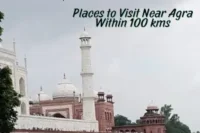Essential India Travel Tips for First-Time Visitors
Published: 9 Jun 2025
Are you planning your first trip to India? Feeling excited but a little nervous? Don’t worry, you’re not alone!
India is full of colors, history, tasty food and warm people. But it can also feel a bit overwhelming if you have never been here before. The streets are busy. The culture is rich. And every city feels like a new world.
This guide is made just for first-time travelers who want to explore India with confidence. We will walk you through simple tips, smart advice and things to know before you go. So, are you ready to travel smarter and enjoy India to the fullest? Let’s get started!
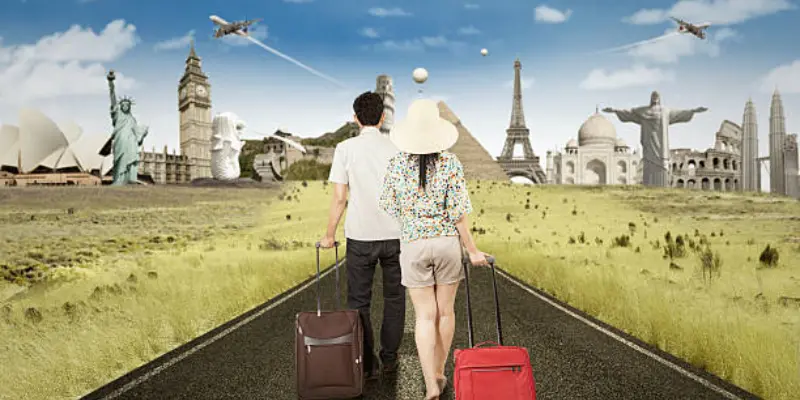
A). Before You Go
If you have decided to visit India in the summer, winter or in monsoon season then you must follow these tips before you start your journey.
1. Get Your Visa Sorted
You need a visa before you enter India. But do not worry India welcomes tourists with an open heart and mind. The good news? It’s simple to get an e-Visa for tourism.
Here’s how it works:
- Visit the official Indian e-Visa website (not a third-party site).
- Fill out the online form with your details.
- Upload a passport-sized photo and a clear scan of your passport’s first page.
- Pay the visa fee online with a credit or debit card.
- Wait for the visa to arrive in your email (usually within 3–5 days).
Tip:
Apply at least 2 weeks before your flight. Print a copy of your e-Visa and keep it with your passport.
Also Read: Top 10 Most Beautiful Places to Visit in Kashmir
2. Plan Your Itinerary Wisely
India is huge and full of exciting places. But don’t try to see everything in one trip. It’s better to pick a few places and enjoy them properly.
Here are a few popular ideas for beginners:
- Golden Triangle– Delhi, Agra and Jaipur. Great for first-timers who want to see forts, palaces and the Taj Mahal.
- Kerala– If you love nature, try this calm and green state. It has backwaters, tea gardens and beaches.
- Goa– Perfect for beach lovers, parties or relaxing by the sea. A 7 day trip or 3 day trip to Goa is always full of adventure and fun.
- Himachal Pradesh or Uttarakhand– Great for mountain views, nature and peaceful towns like Manali or Rishikesh.
Tip:
Spend 2 to 4 nights in each city. Avoid long road trips in one day. India’s roads can be busy and slow due to heavy traffic all day.
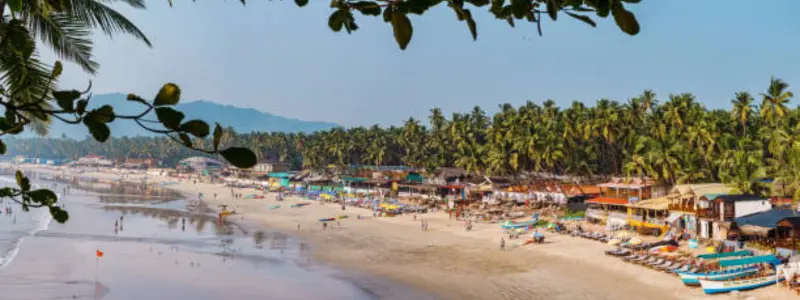
3. Pack Smart for India
Packing the right things will save you time, money and stress. India has many shops but it’s best to bring the basics.
Pack:
- Light cotton clothes (it gets hot and humid)
- A small first-aid kit (band-aids, fever medicine, anti-diarrhea pills)
- A universal power adapter (India uses Type C, D and M plugs)
- Sunglasses, sunscreen and a wide hat for sun protection
- Comfortable walking shoes or sandals
- Reusable water bottle with a filter (optional but useful)
Tip:
Carry a scarf or shawl. It’s useful in temples, on buses or when it gets dusty or sunny.
Suggested Article: Best Time to Visit Ayodhya
4. Know the Weather
India’s weather changes a lot by region and season. So always check the weather before you go to India. It’s important to plan around it.
Here’s a simple guide:
- October to February (Winter): Best time to visit most of India. It’s cool, dry and perfect for sightseeing.
- March to May (Summer): Hot in many places, especially North India. Temperatures can go above 40°C (104°F).
- June to September (Monsoon): Rainy in many areas. South and East India see heavy rainfall.
Example:
If you are visiting Delhi or Rajasthan, go between October and March. For Kerala or Touring South Goa, November to February is ideal.
Tip:
Always check the local weather for each city on your list before you book flights or hotels.
You may want to read: Best Places to Visit Near Annavaram Within 50 Kms
B). On Arrival in India
Welcome to India. Once you reach it, don’t be in a rush. Follow these instructions step by step to move ahead in your journey in roaming India.
1. Stay Calm at the Airport
When you land in India, things might feel busy and loud. That’s normal. Airports like Delhi, Mumbai and Bangalore are big and full of people.
Follow these steps:
- Have your passport, e-Visa printout and return ticket ready.
- Going through immigration, the officer may ask a few basic questions.
- After that, collect your luggage and head to customs.
- If you are not carrying anything to declare, go through the green channel.
Tip:
Use the prepaid taxi counter inside the airport or book a ride with Uber or Ola to avoid scams or high prices.
2. Money Matters
India mostly runs on cash for small things like street food, rickshaws or markets. Big hotels and restaurants accept cards but small shops may not. It is highly advisable to carry enough cash with you in ten, hundred, thousand notes.
Here’s what to do:
- Withdraw Indian Rupees (INR) from an ATM at the airport.
- Carry small notes (₹10, ₹20, ₹50) for daily use.
- Use UPI apps like Google Pay or Paytm, if you get a local SIM.
Tip:
Avoid exchanging money at airports, it’s better to use ATMs for fair rates. Also, inform your bank you are traveling to India to avoid card blocks.
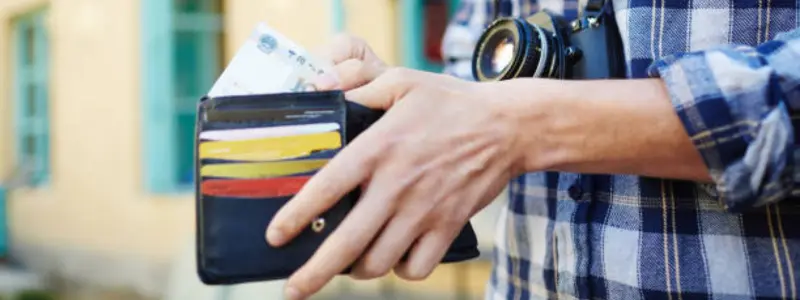
Must Read: Best Places to visit in Delhi in Monsoon
3. Stay Connected
Staying online makes travel easier. Maps, bookings and communication all need the internet.
Here’s how to stay connected:
- Buy a local SIM card at the airport or nearby shop (Airtel and Jio are popular).
- You will need a passport photo and a copy of your visa.
- The shopkeeper will help activate it which can take a few hours to work.
Tip:
Choose a plan that includes calls, SMS and mobile data. Having the internet helps with translations, bookings and using travel apps.
C). Getting Around in India
Now you are ready to roam india. Getting around India can be overwhelming if you don’t plan for it. Let’s find out how.
1. Choosing the Right Transport
India is a big country and getting around can feel confusing at first. But don’t worry you have many options to travel from one place to another. From trains to taxis, there’s something for every budget and comfort level.
Here are some of the most common and easy ways to travel:
- Trains: Best for long-distance travel. Indian trains cover almost every corner of the country. Use the IRCTC website or apps like MakeMyTrip to book tickets. Choose Sleeper Class or AC classes for comfort.
- Flights: India has many low-cost airlines like IndiGo, Go First and SpiceJet. Flying saves time when you are traveling between far-off cities like Delhi and Kochi.
- Buses: Good for short distances or hill stations. Try to choose government or Volvo buses for safer and smoother rides.
- Cabs & Autos: In cities, book rides using Uber or Ola. You can also take auto-rickshaws for short trips but ask for the price first if there’s no meter.
Tip:
Download Google Maps, Uber and Ola before your trip. These apps will make your travel easier and safer.
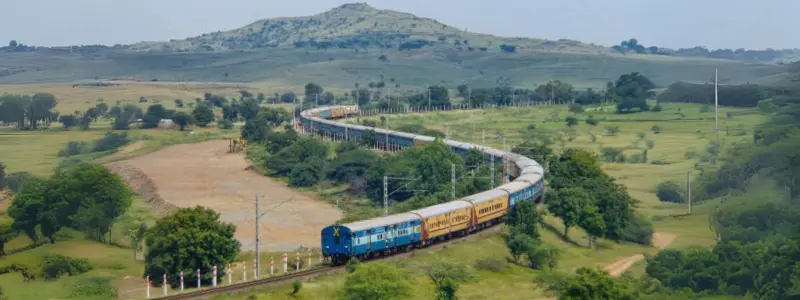
2. Be Careful in Crowds
Indian cities and stations can be very crowded, especially during festivals, weekends or rush hours. The noise and people might feel overwhelming but staying calm and alert will help you enjoy the experience.
Here are some simple safety tips for crowded places:
- Wear your backpack in front in busy areas to keep it safe.
- Avoid showing expensive items like jewelry, phones or lots of cash.
- Always hold your bag close when boarding buses or trains.
- Use zippers and locks on bags to prevent theft.
Tip:
Stick to trusted apps or prepaid services for travel at night. Don’t walk alone in empty streets after dark.
3. Learn a Few Local Words
You don’t need to be fluent in Hindi or any regional language. But learning a few local words shows respect and can make your journey smoother. Locals will appreciate your effort, even if you say the words a bit wrong!
Here are a few basic Hindi words you can try:
- Namaste – Hello
- Dhanyavaad – Thank you
- Kitne ka hai? – How much is this?
- Paani – Water
- Madad – Help
Tip:
If you forget a word, don’t panic. Smile, point and use simple English. Most people will try to help.
D). Staying Safe and Healthy in India
India is usually a safe country for all kinds of tourism and travelers but following quick safety tips allow us to be on a safe site. As no country in the world is safe from scammers, so be prepared and follow these steps closely.
1. Stay Safe While Exploring
India is full of friendly people and amazing places. But like any country, you should stay alert and take small steps to stay safe, especially in busy or new areas.
Here’s how you can protect yourself while traveling:
- Always keep your belongings close. Use a crossbody bag or money belt.
- Don’t carry too much cash. Use ATMs when needed.
- Avoid walking alone at night, especially in quiet or unfamiliar areas.
- Use official taxis or ride apps like Uber and Ola.
- Keep emergency numbers saved like 100 for police and 102 for ambulances.
Tip:
Trust your gut. If a place or person feels unsafe, walk away or ask for help.
2. Eat Safe and Stay Healthy
Indian food is tasty and full of flavor. But your stomach may need time to adjust to the spices and street food. Eating carefully helps you enjoy the food without getting sick.
Here’s how to eat and drink safely:
- Drink only bottled or filtered water. Avoid tap water.
- Check if the bottle seal is intact before buying.
- Eat hot, fresh food from clean stalls or busy restaurants.
- Avoid raw salads or cut fruits from street vendors.
- Wash your hands before and after eating, or use hand sanitizer.
Example:
Try local dishes like butter chicken, dosa or biryani in trusted restaurants. Ask locals for clean places to eat, they usually know the best spots.
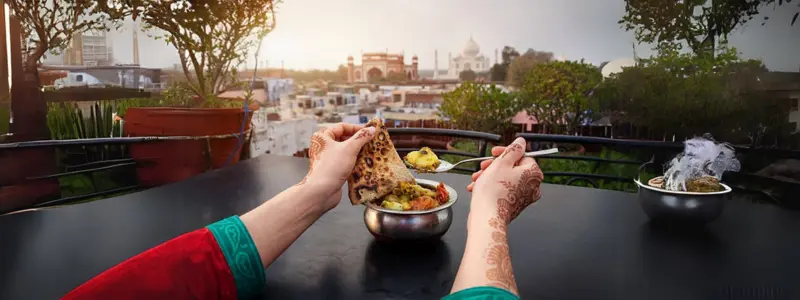
3. Carry a Basic First-Aid Kit
It’s smart to carry a few basic medical items with you. You might not need them but they can be helpful in case of small problems.
Here’s what to pack:
- Band-aids, antiseptic cream
- Painkillers (like paracetamol)
- Diarrhea pills and antacids
- Insect repellent (especially if visiting rural areas)
- Any personal medicine with a prescription note
Tip:
You can find good pharmacies in most Indian cities. Just ask for the nearest “medical shop.”
E). Respect Local Culture and Customs
It is a vise saying that ‘as you sow, so shall you reap’. If you respect the locals and their traditions they will be very friendly with you in return. These are the steps you can take to show respect.
1. Dress Modestly in Public
India has many cultures and dress styles which can vary by region. In big cities, people wear both Western and traditional clothes. But in smaller towns and religious places, it’s best to dress modestly to show respect.
Here’s what to keep in mind:
- Wear clothes that cover your shoulders and knees—especially in temples or mosques.
- Light, loose cotton clothes are best for hot weather.
- Women may carry a scarf or shawl to cover their head in religious places.
- Men should avoid going shirtless in public, except at beaches.
Tip:
When in doubt, look at what locals are wearing and follow their lead.
Are you in Delhi? Read: Best Weekend Getaways Near Delhi
2. Be Polite and Friendly
Indians are warm and welcoming. A kind smile and polite words can go a long way. Even if there’s a language barrier, people often try to help.
Here are a few polite habits to follow:
- Say “Namaste” or smile when greeting people.
- Don’t point with your finger, use your whole hand instead.
- Remove shoes before entering homes, temples and some shops.
- Avoid public displays of affection like hugging or kissing.
Example:
If someone offers you tea, it’s a friendly gesture. Accept it politely, even if you just sip a little.
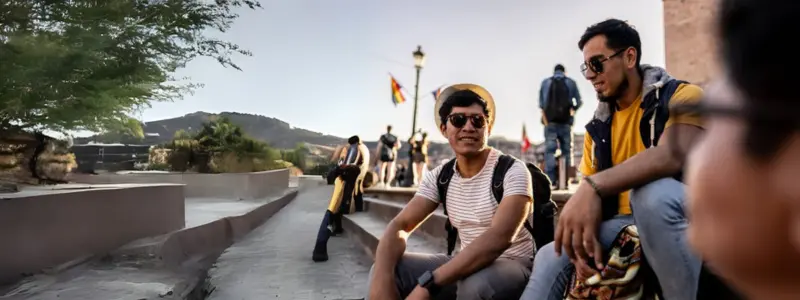
3. Follow Local Rules at Holy Places
Temples, mosques and other sacred sites have special rules. These places are peaceful and respected by locals. It’s important to behave properly while visiting.
Here’s how to be respectful:
- Take off your shoes before entering any religious place.
- Don’t take photos unless signs say it’s allowed.
- Keep your phone on silent and talk softly.
- Some temples may not allow non-Hindus inside the main area, so respect those rules.
- Dress simply and modestly.
Tip:
Ask a local guide if you are unsure about what to do. Most people are happy to explain.
F). Smart Packing Tips for India Travel
Packing is the first, foremost step in any travel campaign. Give it time so that you don’t feel lost while roaming India.
1. Pack Light but Smart
India has many climates, from hot deserts to cool mountains. So, what you pack depends on when and where you are going. But in general, try to travel light, you will move around more easily.
Here’s what you should pack:
- Light cotton clothes for summer (March–June Tourism in India)
- A light jacket or sweater for cooler evenings
- Comfortable shoes for walking and sightseeing
- Flip-flops or sandals for indoors or beaches
- Scarf or shawl, helpful in religious places or dusty areas
- Sunglasses, hat and sunscreen for sunny days
Tip:
Pack a foldable bag, you might want to carry gifts or souvenirs when you return.
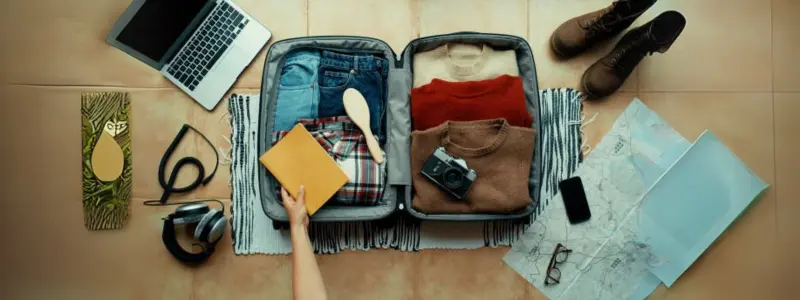
2. Carry Travel Essentials
Some things can make your journey more comfortable and smooth. These items are easy to forget but very useful during travel.
Don’t forget to pack these:
- Power bank and chargers (India uses 230V with Type C/D/M plugs)
- Toiletries and small towel
- Basic medicines and your first-aid kit
- Photocopies of passport, visa and ID
- Reusable water bottle, you can refill with filtered water
Example:
If you are visiting places like Rajasthan or Varanasi, it gets hot and dry. So carrying your own water bottle and sunscreen can save you from heat trouble.
Want to Visit South and Don’t Know What to do There? Here is the solution: Top Activities to do in South Goa
3. Keep Important Documents Safe
You don’t need to carry all your papers everywhere. Just keep what’s needed for the day and store the rest safely.
Here’s how to manage it:
- Keep your passport, visa and tickets in a secure pouch.
- Use a money belt or inside pocket for cash and cards.
- Carry digital backups on your phone or email (like scanned copies of your documents).
- Don’t flash large amounts of money, split it and store it in different places.
Tip:
Lock your backpack or suitcase if you are traveling by train or staying in hostels.
G). Best Travel Apps and Resources to Use in India
India offers many resources for making your trip luxurious. These resources include apps, websites and public platforms.
1. Use Travel Apps for Easy Bookings
Traveling in India becomes much easier when you use apps for booking tickets, hotels or rides. Most of these apps are free and work well in all Indian cities and towns.
Here are the top apps you should download:
- IRCTC Rail Connect– To book train tickets easily.
- MakeMyTrip / Goibibo / Cleartrip– For booking flights, hotels and trains.
- Ola / Uber– For safe cab rides in cities.
- RedBus– To book buses across different states.
Tip:
Create accounts and save payment details before your trip. It will save time when booking quickly.
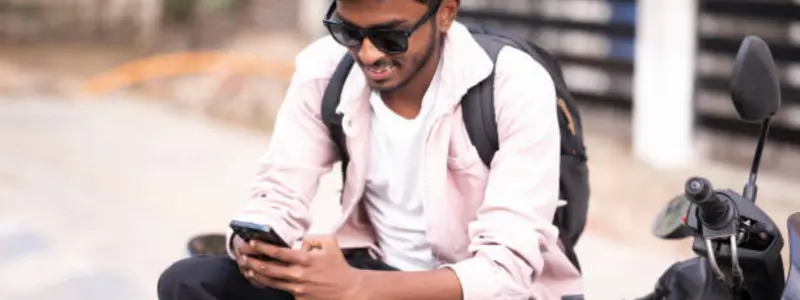
2. Use Maps and Translation Tools
India is full of small roads, lanes and local areas. Having map apps and translation tools on your phone helps you find places faster and talk to locals if needed.
Helpful tools to install:
- Google Maps– Best for directions, traffic and nearby shops or restaurants.
- Google Translate– Helps to translate between English and regional languages.
- Rome2Rio– Shows different travel routes (train, flight, road) between two places.
- Zomato / Swiggy– Find food nearby or order meals to your hotel.
Example:
If you are in Delhi and want to visit India Gate, just open Google Maps and type it in. It will guide you step by step, even on foot.
3. Stay Connected and Informed
Having the right apps also helps you stay informed, find things to do or even meet other travelers.
Try these for extra help:
- WhatsApp– Popular in India. Use it to talk with tour guides, hotels or friends.
- TripAdvisor– Check reviews for places, hotels or restaurants.
- Airbnb– Book homestays or unique rooms.
- Weather apps– Know the local temperature and plan your day.
Tip:
Buy a local SIM card (like Jio, Airtel or Vi) with a data pack for internet access during your trip.
Also Read: Adventurous activities for Goa
Conclusion
Traveling to India for the first time can feel exciting and a little overwhelming. That’s completely normal! India is big, colorful and full of surprises. With some planning, a little patience and an open mind, you will have an unforgettable trip.
You will see beautiful temples, eat delicious food and meet kind people. You’ll also learn new things every day. Yes, there might be some traffic, noise or crowds but that’s all part of the unique experience.
If you ever feel lost or unsure, just ask a local. Many people will go out of their way to help you, even if they don’t speak your language!
India Travel FAQs for First-Time Visitors
Here are frequently asked questions about First Time India Travelers:
A budget traveler can manage with $25-40 per day, including accommodation, food and local transport. Mid-range travelers should budget $50-80 per day for comfortable hotels and dining. Remember that India is generally very affordable compared to Western countries but costs vary greatly between cities and regions.
Solo female travel in India requires extra caution but is definitely possible with proper planning. Stick to well-reviewed accommodations, avoid isolated areas at night and dress conservatively especially in smaller towns. Many female travelers have wonderful experiences by staying alert and trusting their instincts.
Consult your doctor 4-6 weeks before travel for personalized advice based on your itinerary. Common recommendations include Hepatitis A and B, Typhoid and Japanese Encephalitis for certain regions. Some travelers also get vaccinated for malaria prevention depending on the areas they plan to visit.
Alcohol laws vary by state – some states like Bihar and Gujarat prohibit alcohol completely. In most other states, you can buy alcohol from licensed shops and consume it in hotels and restaurants. Always carry ID as age verification is common and respect local customs around drinking.
Bargaining is expected in most markets and with street vendors but not in fixed-price stores or restaurants. Start by offering 30-50% of the asking price and negotiate from there. Stay friendly but firm and be prepared to walk away if the price doesn’t work for you.
For minor issues, visit a local pharmacy (medical shop) where pharmacists can recommend over-the-counter medicines. For serious problems, go to a reputable private hospital in major cities which often have English-speaking doctors. Always keep your travel insurance details handy and contact your embassy if needed.
Tipping is appreciated but not always mandatory like in some Western countries. Tip 10% at restaurants if service charge isn’t included, ₹20-50 to hotel staff and ₹10-20 to taxi drivers for good service. For tour guides, ₹200-500 per day is appropriate depending on the service quality.
Cards are widely accepted in hotels, restaurants and shops in major cities, but many small vendors, street food stalls and rural areas only accept cash. Always carry sufficient cash (especially small denominations) and inform your bank about your travel plans to avoid card blocking.
Most hotels, cafes and restaurants in cities offer free WiFi, though speeds can vary. Getting a local SIM card with a data plan is highly recommended for constant connectivity. Internet speeds are generally good in urban areas but can be slower in remote or mountainous regions.
Politely but firmly say “no thank you” and keep walking without making eye contact or engaging in conversation. Avoid giving money to beggars as it can attract more attention and crowds. If you want to help, consider donating to established local charities or NGOs instead.

- Be Respectful
- Stay Relevant
- Stay Positive
- True Feedback
- Encourage Discussion
- Avoid Spamming
- No Fake News
- Don't Copy-Paste
- No Personal Attacks



- Be Respectful
- Stay Relevant
- Stay Positive
- True Feedback
- Encourage Discussion
- Avoid Spamming
- No Fake News
- Don't Copy-Paste
- No Personal Attacks


